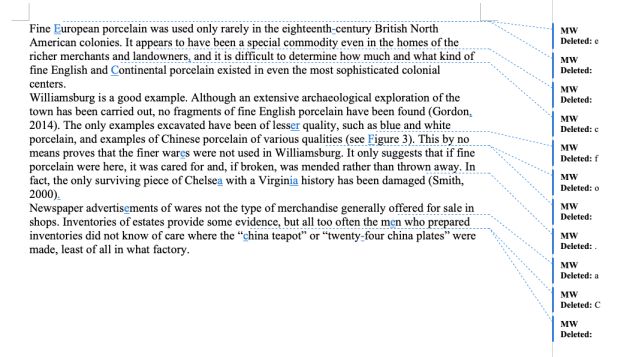A proofreading free sample is a valuable resource that self-publishing authors may use to pursue a quality manuscript. Thus, this post helps self-publishing writers seeking guidance on evaluating proofreading samples and utilising a professional editor’s services. As a self-publishing author, pay attention to correctness and consistency, attention to detail, formatting and layout, communication and punctuality to make use of the benefits of a proofreading free sample. These aspects will oversee your book’s high-quality presentation while fostering its potential for success in the competitive publishing market.
- Attention to detail
- Formatting and layout optimisation
- Effective communication and punctuality
- Samples of previous work

Attention to detail
When evaluating a proofreading free sample, correctness and consistency are paramount. Pay attention to how the proofreading free sample addresses consistency in the following areas:
- grammar
- punctuation
- spelling.
Seek adjustments that will provide consistency to your writing and eliminate any glaring mistakes. A comprehensive review of these components assures clarity and readability.
For instance, a professional proofreader will be able to point out if the character named ‘John’ is later referred to as ‘Jon.’ In non-fiction works, a proofreading sample may pick up on a reference to ‘unclear family’ instead of ‘nuclear family.’
A free proofreading sample allows the editor to demonstrate close attention to details. For example, they may pick up on:
- confusable words, for instance, stationary/stationery, barbers/barbets, expanse/expense
- homophones, for instance, to/two/too or sell/cell,
- spelling of the compound words: open, hyphenated or written as one word
- missing punctuation marks, such as commas, dashes or brackets
- inconsistent chapter or table numbers.
Formatting and layout optimisation
Optimising the format and layout is also part of proofreading. Optimised formatting and layout ensure an easy-to-read, well-organised and professional-looking manuscript. Therefore, pay attention to formatting and layout in the proofreading sample to enhance the overall reading experience that will leave a positive impression on your audience.
When assessing the proofreading free sample, consider how the editor addresses formatting. Examine whether the proofreading sample displays a firm grasp of document structure and pay attention to the following:
- line spacing
- paragraph indentation
- consistent formatting of headings and subheadings
- addressing issues with word division and orphan and widow lines.
Remember, a well-formatted document looks pleasing to the eye and makes it easier for readers to navigate and understand your content.
A good editor will ensure the information flows logically and smooth transitions between sections. They will prioritise chapters, subsections and other features such as tables, figures, or photographs. They will make sure they are correctly numbered.
Optimising formatting and layout is exceptionally significant when proofreading comes before typesetting. However, even a post-typesetting proofreading free sample can demonstrate attention to formatting and layout. For instance, they should check the word division correctly and if there are no orphan or widow lines.
Effective communication and punctuality
A successful author-editor collaboration relies heavily on effective communication and professionalism. Although proofreaders do not usually provide feedback, they may seek clarification from the author on specific issues. Thus, consider how the proofreader conveys their queries in the proofreading sample. Look for a proofreader who communicates politely and respectfully.
Another critical issue to consider is punctuality. The proofreader’s professionalism and attention to the project are demonstrated by the timely delivery of the proofreading free sample and timely responses to requests or issues. A dependable editor adheres to deadlines and appreciates the significance of time-sensitive publishing schedules. Working with someone who values punctuality will guarantee that your writing goes smoothly and stays on track.
By paying attention to effective communication and punctuality when evaluating a proofreading free sample, you will select an expert proofreader with the necessary communication skills who understands the importance of meeting deadlines.
Samples of previous work
Finally, when assessing the suitability of a proofreader, examining samples of previous work provides invaluable insight into their expertise and capabilities. By reviewing samples of previous projects, prospective clients can gain a clearer understanding of the proofreader’s proficiency in addressing various writing styles, genres and subject matters. Furthermore, testimonials and reviews from previous clients offer accounts of their experiences, highlighting the proofreader’s strengths and areas of excellence. These samples serve as tangible evidence of the proofreader’s track record and can instil confidence in their ability to deliver high-quality results. Thus, incorporating an evaluation of samples of previous work into the decision-making process enhances the likelihood of selecting a proofreader who aligns with the specific needs and expectations of the manuscript at hand.
Conclusion
Maximise the potential of a proofreading free sample and enhance your writing by evaluating correctness, attention to detail, formatting and communication. These will help you utilise a professional proofreader’s expertise to refine your work and present it at its best.
Contact me for a proofreading free sample if you want a professional pair of eyes to help you declutter your text (and remember to use my early bird discount!). If you want to hear more from me, including self-editing and writing tips, follow me on Mastodon, Twitter, Facebook and LinkedIn or join my newsletter.


